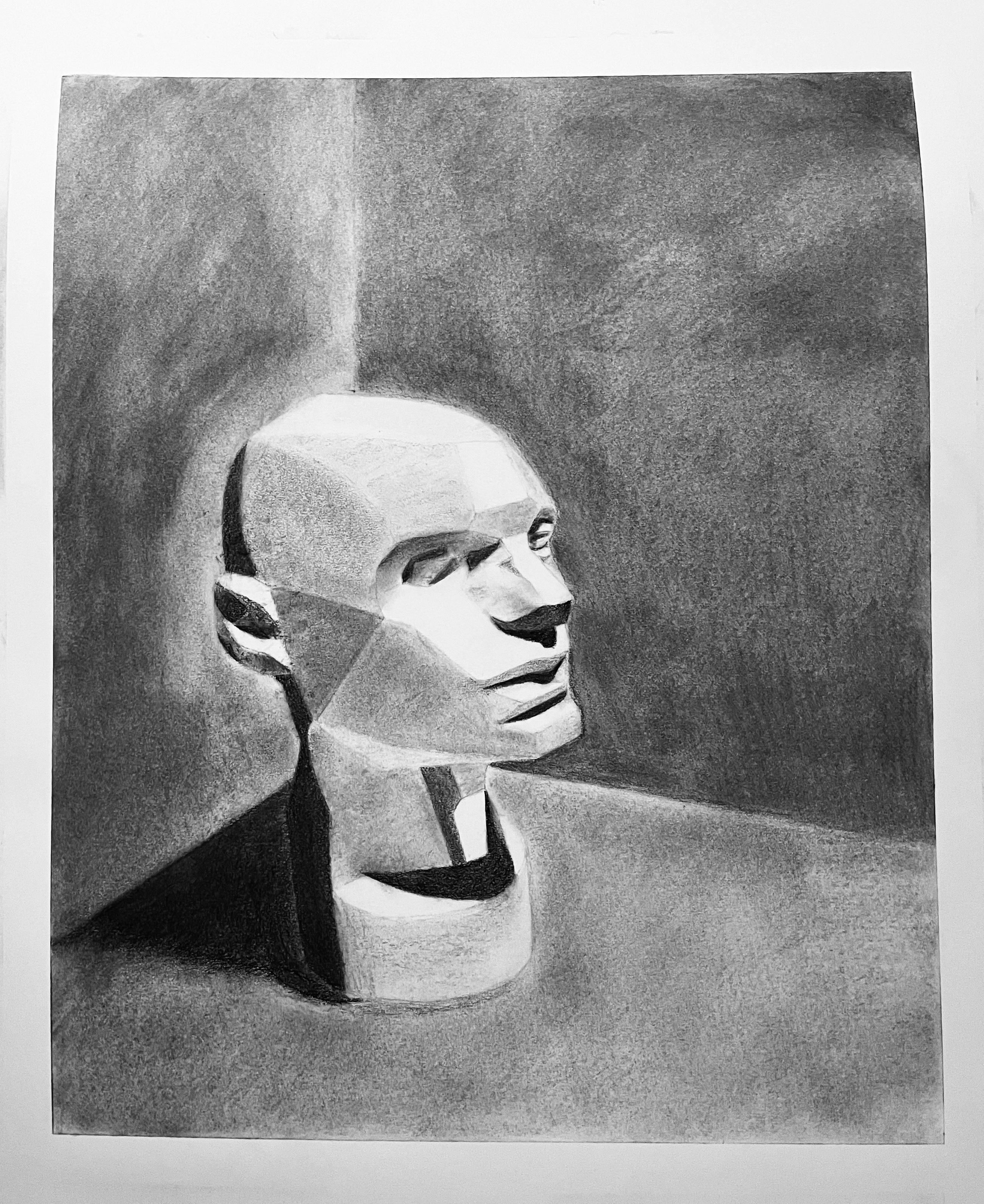
What you’ll learn
Place the horizon/eye level, align edges to vanishing points, and construct scenes from simple boxes before adding curves and detail.
Key terms
- Horizon / Eye Level: Viewer height; where VP(s) sit.
- Vanishing Point (VP): Where parallel lines appear to meet.
- Convergence: Edges angle toward VP instead of staying parallel.
Setups
- 1-Point: Front face square to viewer; depth lines → VP.
- 2-Point: Corner toward viewer; left/right edges → two VPs.
- 3-Point: Add vertical VP for tall/low viewpoints.
Step-by-step
1
Place horizon
Decide eye level. High horizon looks down; low looks up.
2
Choose VP(s)
1 for simple interiors; 2 for exteriors/corners; 3 for dramatic height.
3
Block boxes
Start with a box; align edges toward VP(s). Keep lines light and straight.
4
Subdivide
Find centers, thirds, and equal spacing with diagonals—not eyeballing.
5
Detail last
Add windows, props, and curves after the structure reads.
Tips
- Use a ruler for training, then try freehand with long, straight strokes.
- Keep a light construction layer; darken only final structure lines.
- Limit VP distance—too close exaggerates distortion; too far feels flat.
Troubleshooting
- Wobbly depth: Edges don’t meet VP—extend guidelines further.
- Lean / skew: Horizon tilted—re-level and rebuild box centers.
- Flat look: Missing overlap/scale cues—add objects at different depths.
